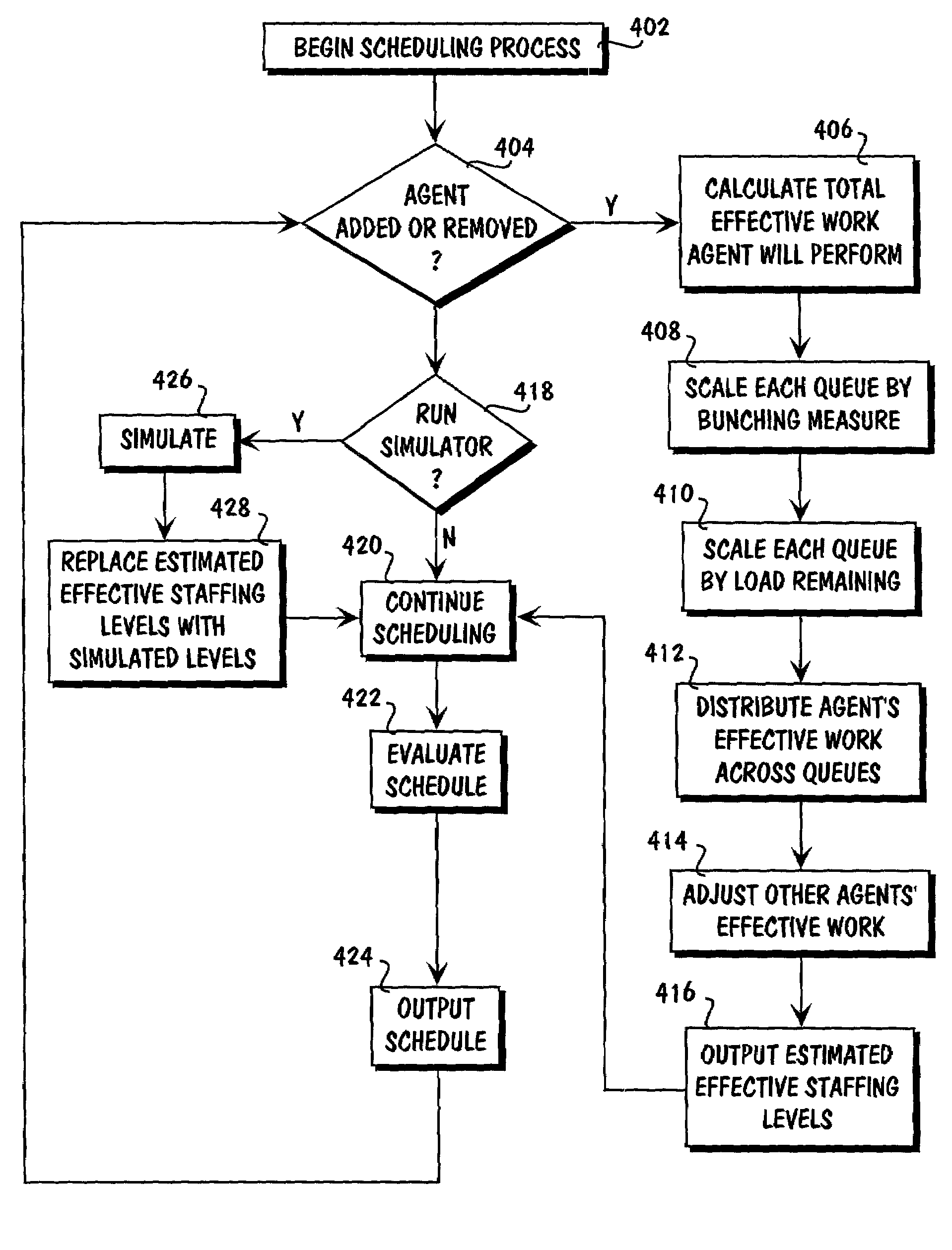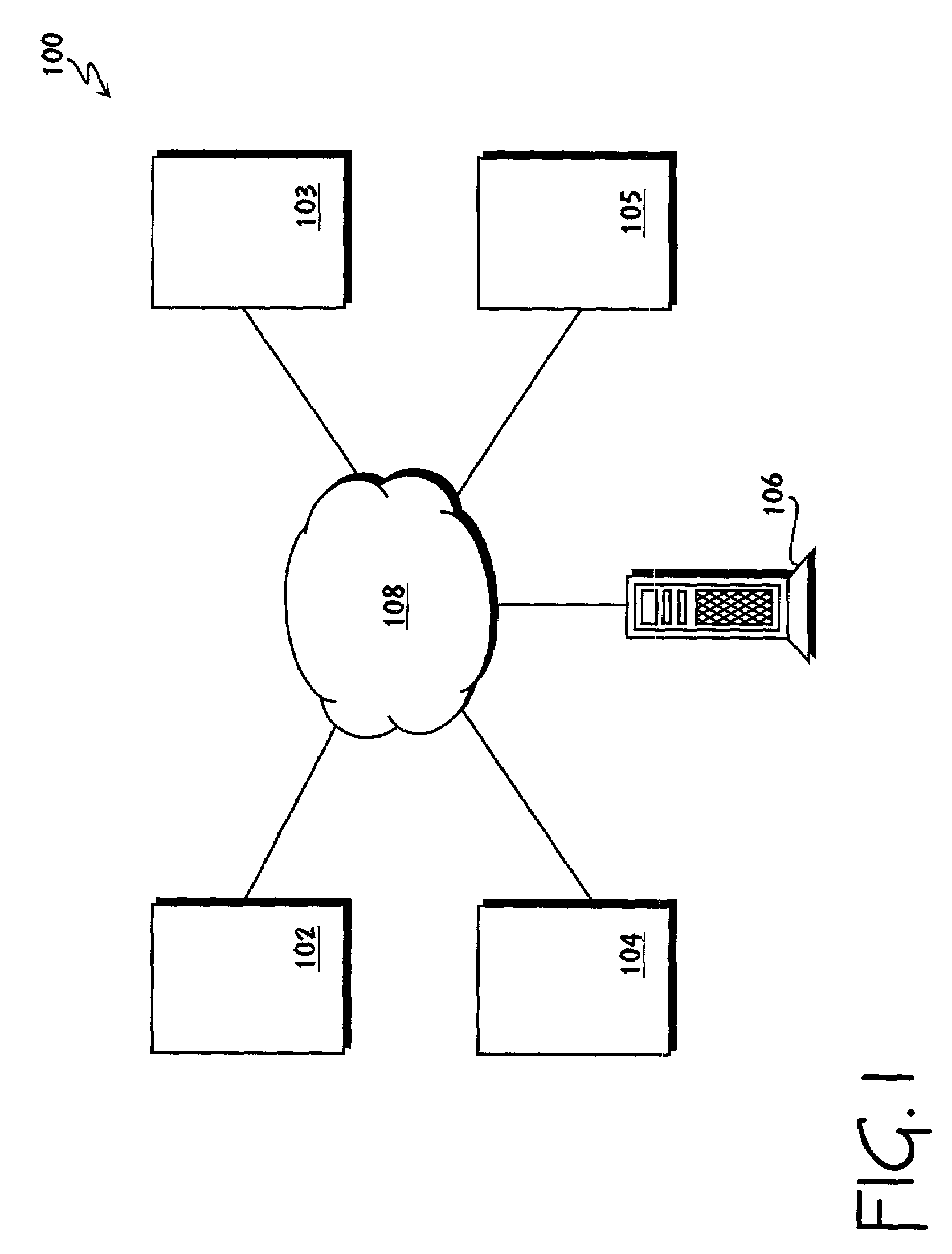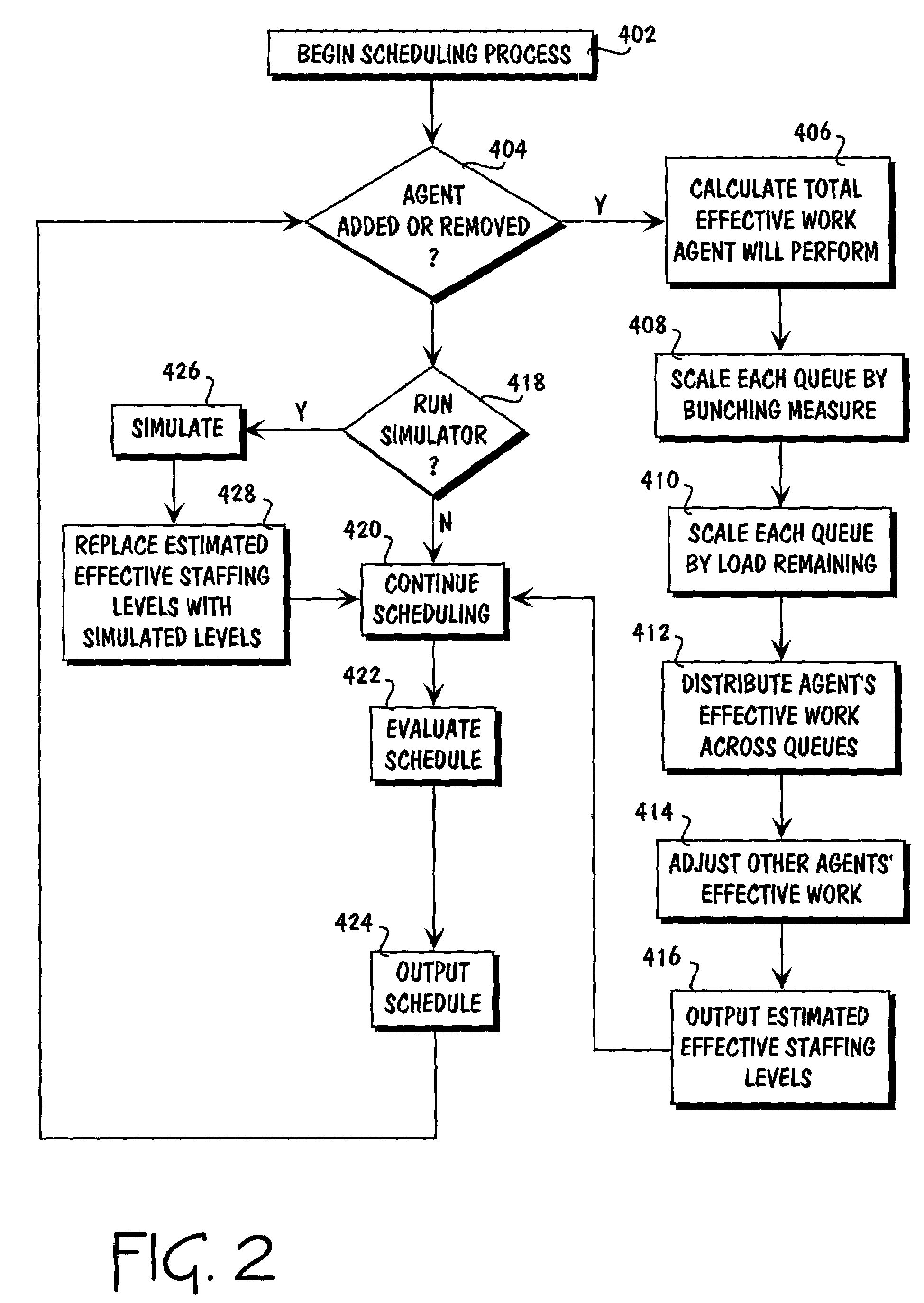System and method for complex schedule generation
a scheduling system and schedule technology, applied in the field of generating complex schedules, can solve the problems of complex scheduling system, inability to answer any type of call, and considerably more difficult than the basic call center scheduling problem, and achieve the effect of effective staffing levels
- Summary
- Abstract
- Description
- Claims
- Application Information
AI Technical Summary
Benefits of technology
Problems solved by technology
Method used
Image
Examples
Embodiment Construction
[0016]A system and method for generating complex schedules in complex environments, such as call center environments, is described. The embodiments described include generating schedules for multiple employees, or agents, each having different sets of skills that enable them to perform various tasks. An agent may be shared across various tasks within one scheduled time period.
[0017]FIG. 1 is an embodiment of a system 100 for generating complex schedules. The system includes multiple client computers 102–105, which are coupled to the server 106 through a network 108. The network 108 can be any network, such as a local area network, a wide area network, or the Internet. The client computers each include one or more processors and one or more storage devices. Each of the client computers also includes a display device, and one or more input devices. The server 106 includes one or more storage devices. All of the storage devices store various data and software programs. In one embodimen...
PUM
 Login to View More
Login to View More Abstract
Description
Claims
Application Information
 Login to View More
Login to View More - R&D
- Intellectual Property
- Life Sciences
- Materials
- Tech Scout
- Unparalleled Data Quality
- Higher Quality Content
- 60% Fewer Hallucinations
Browse by: Latest US Patents, China's latest patents, Technical Efficacy Thesaurus, Application Domain, Technology Topic, Popular Technical Reports.
© 2025 PatSnap. All rights reserved.Legal|Privacy policy|Modern Slavery Act Transparency Statement|Sitemap|About US| Contact US: help@patsnap.com



